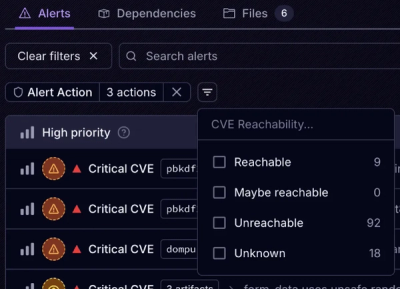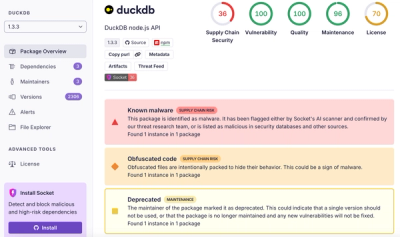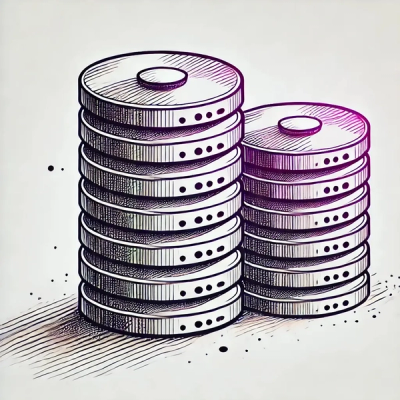
Product
Introducing Tier 1 Reachability: Precision CVE Triage for Enterprise Teams
Socket’s new Tier 1 Reachability filters out up to 80% of irrelevant CVEs, so security teams can focus on the vulnerabilities that matter.
@grafana/faro-webpack-plugin
Advanced tools
Upload a source map to the Faro source map API from a Webpack build pipeline
This plugin uploads source maps to the Faro collector to enable de-obfuscation of stack traces in the Grafana Cloud Frontend Observability UI.
[!NOTE] The Faro JavaScript bundler plugins work with client-side rendered applications. Server-side rendering isn't yet supported.
To install the Faro JavaScript bundler plugins for Webpack, use the package manager of your choice.
npm install --save-dev @grafana/faro-webpack-plugin
To install the Webpack plugin with yarn, run:
yarn add --dev @grafana/faro-webpack-plugin
Details of how to use the plugins with your bundler reside in the Frontend Observability plugin under the "Settings" -> "Source Maps" tab after clicking into your instrumented app.
That tab includes the necessary configuration for the Faro JavaScript bundler plugins, including the appName, appId, and endpoint values that you need for the plugins to work with your app. The details provided below are general instructions for how to use the plugins with your bundler.
To use the Webpack plugin, add the following to your webpack.config.js:
// other imports
import FaroSourceMapUploaderPlugin from "@grafana/faro-webpack-plugin";
module.exports = {
// other configs
plugins: [
// other plugins
new FaroSourceMapUploaderPlugin({
appName: "$your-app-name",
endpoint: "$your-faro-collector-url",
apiKey: "$your-api-key",
appId: "$your-app-id",
stackId: "$your-stack-id",
gzipContents: true,
}),
],
};
The following options are available for the Faro JavaScript bundler plugins:
appName: string required: The name of your application, it should match the appName value used in your Faro Web SDK configurationendpoint: string required: The URL of your Faro Collector endpoint, found in Frontend Observability under Settings and Web SDK ConfigapiKey: string required: The API key for your Faro Collector, you can generate a new scope on [grafana.com], refer to the Obtaining API key sectionappId: string required: The ID of your application, it should match the appId value used in your Faro Web SDK configurationstackId: string required: The ID of the stack, found in Frontend Observability under Settings -> Source Maps -> Configure source map uploadsoutputFiles: string[] optional: An array of source map files to upload, by default Faro uploads all source mapsbundleId: string optional: The ID of the bundle/build, by default auto-generated, or specify an ID to filter by bundle ID in Frontend ObservabilitykeepSourcemaps: boolean optional: Whether to keep the source maps in your generated bundle after uploading, default falsegzipContents: boolean optional: Whether to archive and compress the source maps before uploading, default trueverbose: boolean optional: Whether to log verbose output during the upload process, default falsemaxUploadSize: number optional: Maximum upload size in bytes, default is 30MB. The Faro API has a 30MB limit for individual file uploads by default. In special circumstances, this limit may be changed by contacting Grafana Cloud support.After initial configuration, the Faro JavaScript bundler plugins automatically uploads your source maps to Grafana Cloud when you build your application. You can verify that the source maps upload successfully by in the "Settings" -> "Source Maps" tab in the Frontend Observability plugin. From there you are able to see the source maps that you have uploaded.
After you have completed all the required steps, you have finished - the Faro Collector begins processing your source maps and associating them with your telemetry data. The portions of your stack traces with source maps uploaded to the Faro Collector are automatically de-obfuscated and displayed in the Frontend Observability plugin when viewing your error data.
FAQs
Upload a source map to the Faro source map API from a Webpack build pipeline
The npm package @grafana/faro-webpack-plugin receives a total of 11,974 weekly downloads. As such, @grafana/faro-webpack-plugin popularity was classified as popular.
We found that @grafana/faro-webpack-plugin demonstrated a healthy version release cadence and project activity because the last version was released less than a year ago. It has 23 open source maintainers collaborating on the project.
Did you know?

Socket for GitHub automatically highlights issues in each pull request and monitors the health of all your open source dependencies. Discover the contents of your packages and block harmful activity before you install or update your dependencies.

Product
Socket’s new Tier 1 Reachability filters out up to 80% of irrelevant CVEs, so security teams can focus on the vulnerabilities that matter.

Research
/Security News
Ongoing npm supply chain attack spreads to DuckDB: multiple packages compromised with the same wallet-drainer malware.

Security News
The MCP Steering Committee has launched the official MCP Registry in preview, a central hub for discovering and publishing MCP servers.